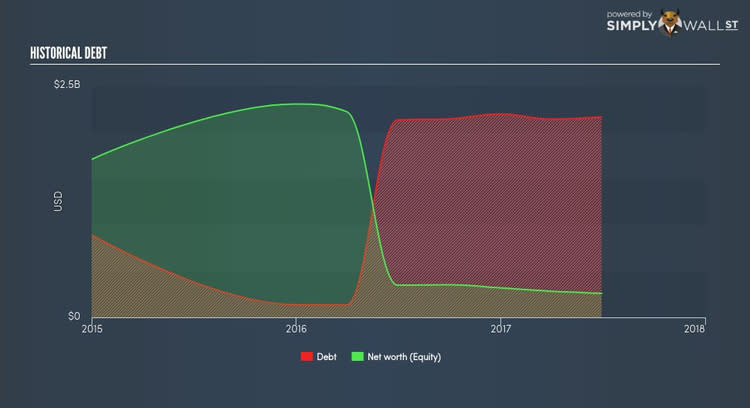What does Herc Holdings Inc’s (HRI) Balance Sheet Tell Us Abouts Its Future?

Investors are always looking for growth in small-cap stocks like Herc Holdings Inc (NYSE:HRI), with a market cap of USD $1.41B. However, an important fact which most ignore is: how financially healthy is the company? Why is it important? A major downturn in the energy industry has resulted in over 150 companies going bankrupt and has put more than 100 on the verge of a collapse, primarily due to excessive debt. These factors make a basic understanding of a company’s financial position of utmost importance for a potential investor. Here are a few basic checks that are good enough to have a broad overview of the company’s financial strength. See our latest analysis for HRI
Does HRI generate enough cash through operations?
Unxpected adverse events, such as natural disasters and wars, can be a true test of a company’s capacity to meet its obligations. These catastrophes does not mean the company can stop servicing its debt obligations. We can test the impact of these adverse events by looking at whether cash from its current operations can pay back its current debt obligations. Last year, HRI’s operating cash flow was 0.16x its current debt. A ratio of over 0.1x shows that HRI is generating adequate cash from its core business, which should increase its potential to pay back near-term debt.
Can HRI pay its short-term liabilities?
What about its other commitments such as payments to suppliers and salaries to its employees? During times of unfavourable events, HRI could be required to liquidate some of its assets to meet these upcoming payments, as cash flow from operations is hindered. We should examine if the company’s cash and short-term investment levels match its current liabilities. Our analysis shows that HRI is unable to meet all of its upcoming commitments with its cash and other short-term assets. While this is not abnormal for companies, as their cash is better invested in the business or returned to investors than lying around, it does bring about some concerns should any unfavourable circumstances arise.
Can HRI service its debt comfortably?
Debt-to-equity ratio tells us how much of the asset debtors could claim if the company went out of business. For HRI, the debt-to-equity ratio stands at above 100%, which indicates that the company is holding a high level of debt relative to its net worth. In the event of financial turmoil, the company may experience difficulty meeting interest and other debt obligations. No matter how high the company’s debt, if it can easily cover the interest payments, it’s considered to be efficient with its use of excess leverage. A company generating earnings at least three times its interest payments is considered financially sound. HRI’s interest on debt is not strongly covered by earnings as it sits at around 0.48x. Lenders may be more reluctant to lend out more funding as HRI’s low interest coverage already puts the company at higher risk of default.
Next Steps:
Are you a shareholder? With a high level of debt on its balance sheet, HRI could still be in a financially strong position if its cash flow also stacked up. However, this isn’t the case, and there’s room for HRI to increase its operational efficiency. In addition to this, the company may struggle to meet its near term liabilities should an adverse event occur. In the future, HRI’s financial situation may change. I recommend keeping abreast of market expectations for HRI’s future growth on our free analysis platform.
Are you a potential investor? HRI’s large debt ratio along with low cash coverage of debt in addition to low liquidity coverage of near-term commitments may send potential investors running the other way. Though, keep in mind that this is a point-in-time analysis, and today’s performance may not be representative of HRI’s track record. I encourage you to continue your research by taking a look at HRI’s past performance analysis on our free platform in order to determine for yourself whether its debt position is justified.
To help readers see pass the short term volatility of the financial market, we aim to bring you a long-term focused research analysis purely driven by fundamental data. Note that our analysis does not factor in the latest price sensitive company announcements.
The author is an independent contributor and at the time of publication had no position in the stocks mentioned.

